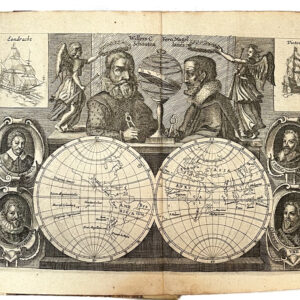The only comprehensive architectural history of one of the world’s most important mosques.
The Structural History of the Aqsa Mosque. A record of archaeological gleanings from the repairs of 1938-1942.
Out of stock
Description
This rare report is the only comprehensive archaeological investigation of al-Aqsa Mosque in Jerusalem that has ever been published. It is consequently of seminal importance to the history of Islamic architecture and to the history of Jerusalem.
The volume was published in 1949 by Robert W. Hamilton, the director of the British Mandate’s antiquities service in Palestine until 1948. Hamilton oversaw four years of restoration work at the mosque (1938-1942), most of which took place during World War 2, and his report constitutes the only modern scientific analysis of the building.
Hamilton’s book describes the restorations carried out and offers a range of important observations on the original building techniques and the subsequent construction phases. To this day, it still constitutes the primary empirical basis for understanding the mosque’s exact history. In addition to the written report, the book abounds with architectural plans, section drawings, and numerous photographs of the original decorations and embellishments, inscriptions, builders’ graffiti, and associated archaeological finds. The book is intact, with all folding plates and plans in excellent condition.
The importance of al-Aqsa Mosque
Al-Aqsa constitutes the main mosque in the much larger Sacred Precinct of Jerusalem known as the Haram al-Sharif. This holy compound, built on top of the Temple Mount and consequently a locus of conflict, also includes the magnificent Dome of the Rock and stands as the third most holy place in Islam (after Mecca and Madinah).
The Haram al-Sharif was constructed in the late 7th century under the first Islamic dynasty known as the Umayyads (661-749 CE). The Umayyads ruled the nascent Islamic empire from their heartland in Bilad al-Sham (Greater Syria-Palestine). While the Umayyad capital was at Damascus, the caliphs were itinerant rulers who were keenly aware of the symbolic weight of their actions and affiliations. Therefore, It is no surprise that despite its small population, Jerusalem was deemed of the highest importance and endowed with a magnificent religious complex in the city’s heart.
In addition to the precinct itself, the Umayyads constructed three large palaces immediately south of the Temple Mount. One of these was the caliph’s private Jerusalem residence, and archaeological analysis has shown that this building was connected directly to al-Aqsa Mosque by means of a small bridge. In this manner, the caliph could enter and exit the mosque directly for Friday prayers, thus avoiding the potentially dangerous crowds.
Over the following centuries, the Islamic world’s political power would shift and fragment. Still, the spiritual and historical importance of the Haram al-Sharif, particularly al-Aqsa Mosque, has remained to this day.
Census
Oxford University Press published Hamilton’s report on al-Aqsa Mosque, originally distributed widely in institutional libraries. Consequently, it is not difficult to find a library copy (OCLC no. 2103007 and no.1072777044 for the Bonn example).
However, outside of institutional collections, finding an example of the original 1949 publication is extremely difficult. No examples of this book are available on the private market, and there is no record of any sales with rarebookhub.com.
Cartographer(s):
Robert W. Hamilton (1905-1995) was a British archaeologist and academic known for his contributions to Near Eastern archaeology. He served as a senior lecturer at the University of Oxford from 1949 to 1956 and later as the Keeper of the Ashmolean Museum from 1962 to 1972. Hamilton’s career began with significant excavations in Palestine and Jordan, including Jerash and Tel Megiddo, in 1929. He also played a critical role in the exploration of Nineveh. He served as the chief inspector of antiquities in the British Mandate of Palestine from 1931 to 1938, where he oversaw the renovation of the al-Aqsa Mosque. Hamilton’s work was disrupted by World War II and the push to establish the state of Israel, leading to his departure from Palestine in 1948.
Condition Description
Excellent. Beautifully rebound.
References



![Narrative of a Journey to the Shores of the Polar Sea, in the Years 1819, 20, 21 and 22. [First Edition, First Issue]](https://neatlinemaps.com/wp-content/uploads/2022/09/NL-01510_thumbnail-300x300.jpg)
![Narrative of a Journey to the Shores of the Polar Sea, in the Years 1819, 20, 21 and 22. [First Edition, First Issue]](https://neatlinemaps.com/wp-content/uploads/2022/09/NL-01510-cover-oblique_thumbnail-scaled-300x300.jpg)